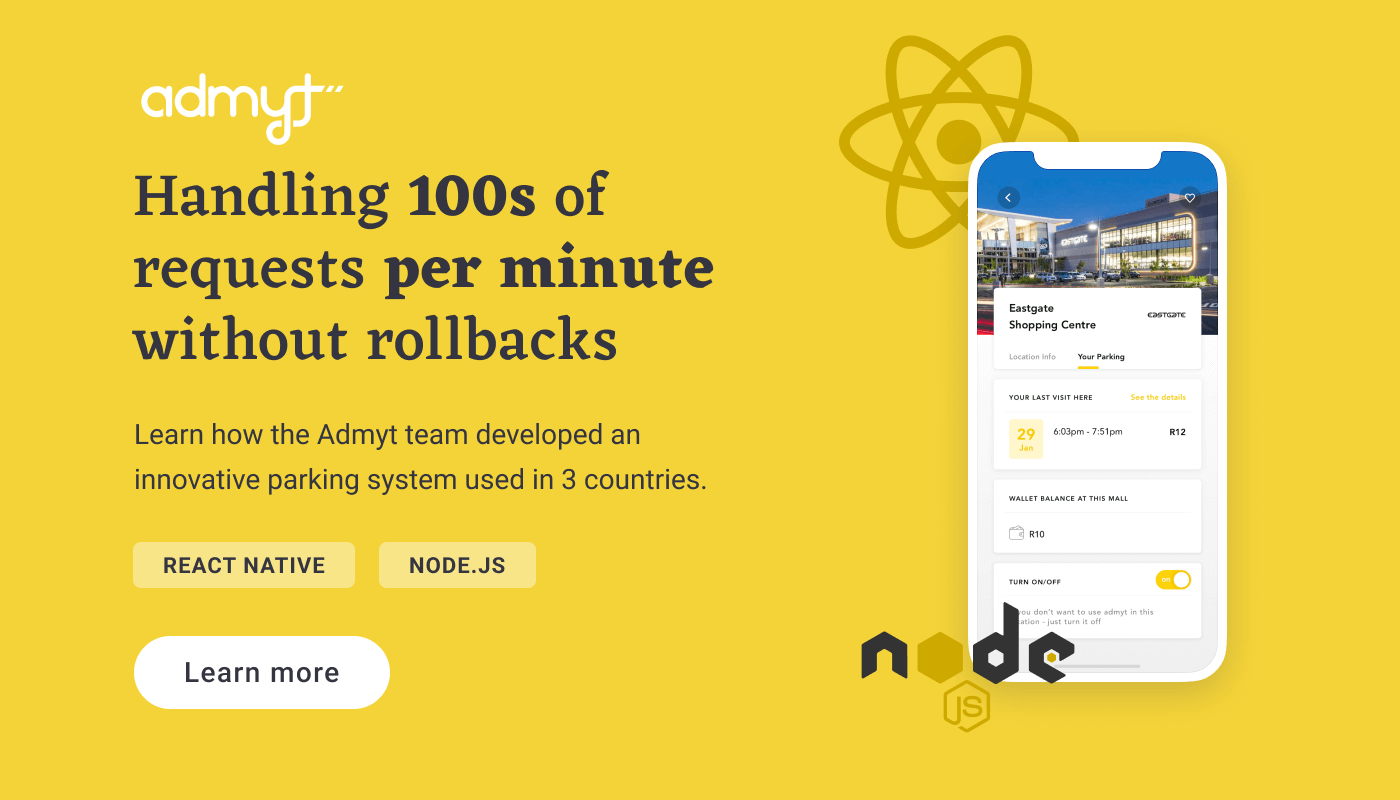The State of Vue.js Report 2025 is now available! Case studies, key trends and community insights.
Table of Contents
Node.js is a single-threaded runtime environment for writing server-side applications using JavaScript, and may be one of the best solutions when aiming to build full-stack applications.
It’s popular with a number of renowned international companies, which may encourage others to consider it as the right tool to use in their own software development efforts.

In this post, we’ll address the most common questions about Node.js that you may have when trying to decide whether or not to implement Node.js into your app’s technology stack.
Let’s start with the basics, shall we?
1. Is Node.js a programming language?
Although sometimes mistakenly described as one, Node.js is not a programming language.
JavaScript used to be associated with only the frontend side of Web development, but with the introduction of Node.js in 2009, the JavaScript ecosystem suddenly grew to include the backend as well.
With the use of tools such as MEAN, MEVN, or other solutions that incorporate JavaScript, Node.js is a gateway to building full-stack applications purely in JavaScript.
Based on Chrome’s V8 JavaScript runtime engine, which converts JavaScript code into low-level machine code, Node.js is fast and lightweight.
2. What can you use Node.js for?
The rule of thumb with Node.js is to use it for building real-time applications that generate a large number of I/O operations which in practice means applications expecting a huge traffic load.
Those include:
- gaming applications
- social networking apps
- instant messaging apps
- project management tools
- video and audio broadcasting apps
- discussion boards
- IoT devices and apps

3. Can I use Node.js for microservices and serverless?
Microservices architecture
Embracing the microservice architecture means building an application made of separate services, where each service is responsible for handling different tasks. Going with a microservice architecture makes it much easier to scale the resulting app and implement additional functionalities than it is when dealing with a large monolithic core.
Choosing Node.js as the technology for our microservice architecture will result in a flexible, lightweight, and highly performant application. Another advantage of microservices is that you can have small teams that are responsible only for their part of the codebase. As a result, in case you need to introduce any changes to your application, the codebase can be updated incrementally, as per business needs. Furthermore, parts of the code can be developed in different programming languages, giving you greater control over functionality and performance.
Serverless architecture
When talking about Node.js, it’s worth mentioning the serverless architecture approach as opposed to microservices.
Going serverless means a situation in which a developer is freed from managing servers and instead, uses functions when writing code which gives the ability to deploy any individual piece of code, or function. As a result, the bill is based on the number of times the functions have been invoked—making services such as these are easy to scale.
Serverless with Node.js implicates zero spending on DevOps—operations focused on handling servers which is quite a costly matter in microservices. Overall, the cost is lower than managing a standard infrastructure.
4. Recommended business sizes for Node.js
Enterprises
Node.js is perfect for microservice architectures and meeting future scalability needs. Therefore, we recommend the technology for enterprises and large-scale projects.
Startups
Many startup companies decide to implement Node.js into their backend tech stacks precisely because of Node’s scalability capabilities. Startups also tend to choose Node.js because it allows them to build apps with fewer developers, lowering development costs.
5. Recommended industries for Node development
Because Node.js handles data-intensive tasks remarkably well, it’s recommended for travel industry websites or wherever there’s a need to connect to various APIs to source data.
Other popular industries for Node.js are the entertainment, gambling, and real estate industries.
6. Is Node good for prototyping and MVPs?
Because Node.js comes with a vast repository of modules in the npm, developers can prototype and build MVPs relatively fast. Node's scalability and performance are a bonus, in case the app will need to be scaled up or expanded somewhere down the line.
However, relying on third-party modules from the npm brings certain drawbacks (such as the inability to assess module quality or a large number of modules to choose from). That's why it's important to look for developers who have experience in developing in Node.js.
7. Can you build desktop applications with Node.js?
Basically yes, you can build both desktop and mobile apps with Node.js. However, the answer is positive due to the JavaScript runtime environment, not Node’s character itself as it is a typical server tool.
With the use of frameworks such as Electron, you can borrow parts of a Web app’s code and build a desktop version of the app on top of this foundation. This solution lets developers create native desktop applications with JavaScript, HTML, and CSS only—no need for in-depth knowledge of Objective-C or C#.
8. Can Node.js be used to build AI and machine learning algorithms?
While Node.js has libraries and tools for incorporating AI-based elements into apps, TensorFlow.js for machine learning being one example, it’s not exactly the best use case for this particular technology.
Python and Ruby would be a much better choice for AI and machine learning scripting.
9. How fast is Node?
We’ve already said that Node is fast, but how does it compare to other popular server-side languages?
When it comes to PHP, Ruby, Java, or Python, apps built with Node.js will exhibit greater performance. On the flip side, fast backend languages such as GoLang or Erlang leave no question as to who rules the performance-side of backend development.
Consequently, the performance needs of an app have to be thoroughly discussed with the development team prior to deciding on a specific backend technology.
10. Developer availability
The popularity of Node.js continues to demonstrate steady growth. Seeing as more and more large companies keep selecting Node.js for their technology stacks, the demand for Node.js skills among developers is also growing.
As developers are busy polishing up their Node.js chops, the demand is still far from being met. To find talented Node.js devs, you might want to look outside your country.
11. Who is using Node.js?
A bevy of internationally renowned brands has already implemented Node.js into their technology stacks, applauding the environment for its speed and smaller developer footprint. Here’s a brief list of major companies that have put their trust in Node:
- Slack
- eBay
- Coursera
- Asana
- Uber
- Netflix
- Medium
- Trello
- InVisionApp
- Fitbit
See the stories behind their decisions and how Node.js benefited them.

12. Key benefits of developing in Node.js
One language
Arguably the biggest benefit of Node.js development is the possibility of writing the whole infrastructure of a Web application in one language—JavaScript.
Lower hiring costs
Full-stack JavaScript development naturally requires fewer developers because one team can swiftly navigate through the JavaScript environment, managing the code and expanding it as per project needs. This, in turn, greatly reduces personnel costs
It’s fast
The event-driven architecture of Node.js makes it a fast technology—instead of creating multiple threads for each request or waiting for one request to finish before starting another, Node.js initiates multiple simultaneous requests.
It’s innovative
Node.js comes with the biggest repository of libraries in the developer world—the npm (Node Package Manager). Node modules can be reused across the code, breathing more functionality into an application. The open-source nature of the repository promotes the emergence of innovative solutions, reduces development costs, and cuts deployment time.
Strong backing
Node.js has strong corporate backing. The member roster of the Node.js foundation includes the likes of IBM, Google, Microsoft, PayPal, and Intel. Such industry backing, paired with long-term support, ensures that the technology will continue to be developed and gives plenty of time to companies using Node.js to transition smoothly into new releases of the tool.
13. Key drawbacks of Node.js development
It’s not for everyone
What makes Node a great choice for real-time apps limits its performance in other applications, i.e., graphics processing, video and audio editing. In general, operations that are heavy on the CPU will be better off written in other popular and reliable programming languages, such as Ruby, PHP, or Python.
Node.js is not recommended for CPU-heavy tasks because once a resource-demanding request enters the event loop, it prevents other requests from being answered until that one request is complete.
The NMP comes with no guide
Although an amazing resource in its own right, the NPM can be a double-edged sword. While the majority of the libraries it offers are stable, it might be difficult to find those that can be trusted to do the job well in the veritable ocean of modules the npm holds. Neither does the npm include a feature that would assess the quality of the packages, and many libraries have incomplete or no documentation.
Callback hell
Node.js is asynchronous, meaning it executes requests without depending on the completion of other tasks. To maintain the non-blocking nature of Node.js, functions with callbacks have to be written into the code.
This can sometimes result in a “callback hell,” where callbacks are put inside callbacks, resulting in code that is difficult to manage and decipher. It’s worth noting that “callback hell” is not necessarily a drawback of Node.js per se. It’s more a sign of a lack of experience and understanding of the JavaScript paradigm—in which the code executes asynchronously, rather than line after line.
The FAQ obviously covers only the most basic questions about this particular environment.
Over to you
If you feel you’d like to know more about Node.js, feel free to contact us.
We’d be more than glad to explain how this technology can help your business and whether it’s the right choice for your application.

:quality(90))
:quality(90))